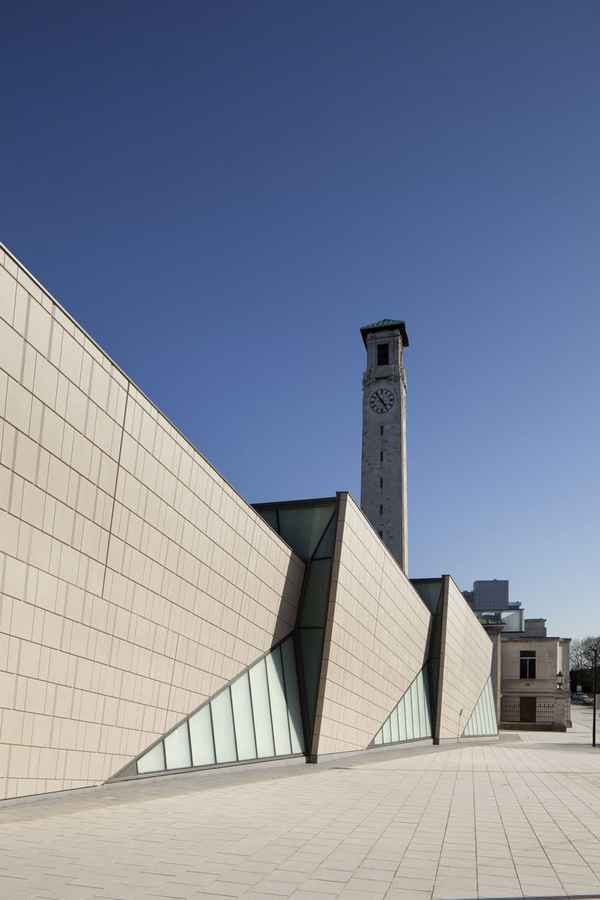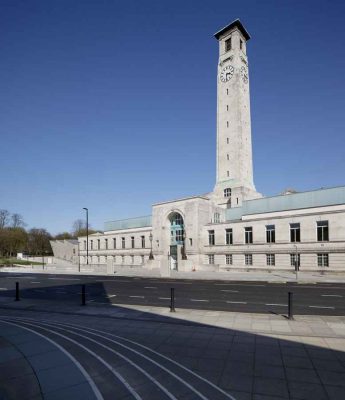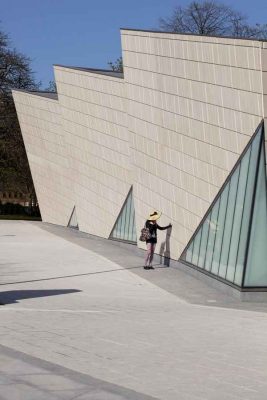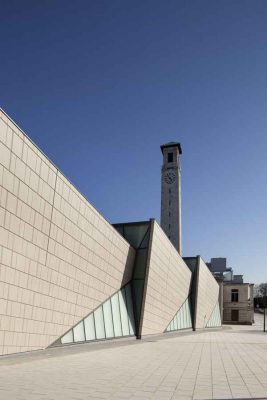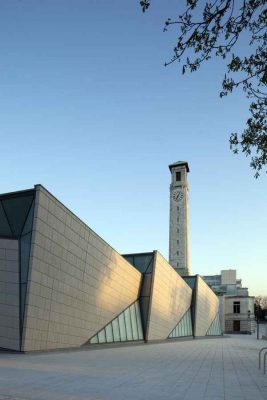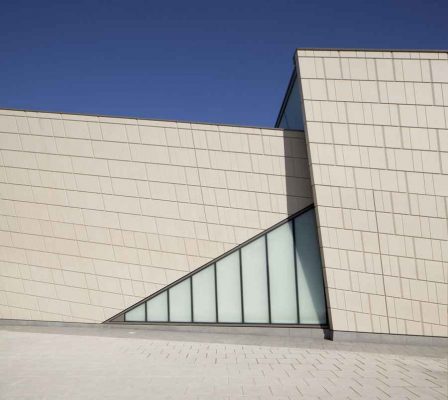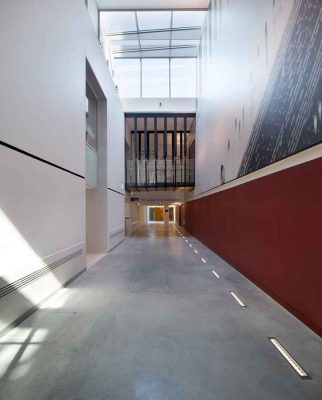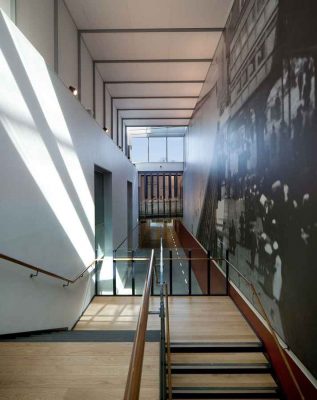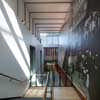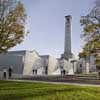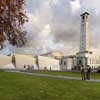Southampton Sea City Project, Titanic Museum England Photos, Design Property Images
Southampton Sea City : Titanic Museum Building
Southampton SeaCity Building, Hampshire design by Wilkinson Eyre, England, UK
17 Apr 2012
Southampton SeaCity Museum
Design: Wilkinson Eyre Architects
Information from SeaCity Museum:
Based at the heart of Southampton, SeaCity Museum tells the story of the people of the city, their fascinating lives and historic connections with Titanic and the sea.
SeaCity Museum opened exactly 100 years after the Titanic set sail from the city.
The iconic new museum celebrates the city’s maritime heritage and commemorates the crew of the Titanic. SeaCity Museum, which cost £15million, tells the story of Southampton’s crew on the Titanic, and the impact the tragedy had on families in the city. It also features other major maritime led exhibitions, telling the stories of people who have arrived and departed in the city since pre-historic times.
Mike Harris, Senior Manager for Leisure and Culture at Southampton City Council, said: “The opening is a proud moment for Southampton. A huge amount of time and effort has gone into every stage of the museum’s creation, and to have finally reached the point where we can open the doors to visitors is a great achievement.’’
Southampton Sea City Museum – Project Description
The SeaCity Museum, Southampton, opens on the 100th anniversary of the Titanic’s departure from the city
Wilkinson Eyre Architects has unveiled images of Southampton City Council’s new SeaCity Museum opened on April 10th 2012, exactly a century after the RMS Titanic set sail from Southampton. The design for the £15m museum, which has refurbished and extended one of city’s most important civic buildings, will tell the largely untold and fascinating story of the crew on board the Titanic and the impact the sinking of the world’s most famous ship had on families in Southampton. The Museum will also feature other exhibitions about the city’s maritime past and present, telling the stories of people who have arrived and departed in the port over the past 2,000 years.
The project’s architectural brief was to reinvigorate the existing Grade II* listed Magistrates’ Court building, which includes courtrooms and cell block, to create 2000 sq m of exhibition and learning space. Plans also included the addition of a pavilion, which signals the presence of a new important cultural attraction within the city, and has taken the form of a bold architectural addition connected to the north façade of the existing building.
Designing the visitor experience
The Magistrates’ Court building forms part of a complex, collectively known as the Civic Centre, which was designed by E. Berry Webber and represents one of the most important 1930s buildings of its type in the south of England. On entering the building, visitors move into the foyer that provides orientation and connectivity between the two principal levels of the building and opens to the dramatic newly-refurbished Grand Hall.
The main entrance space provides access to the ground floor, where the ticketing, shop and cafe are located. This is adjoined by a triple height light well that has been formed by enclosing a former prisoners’ exercise yard. A continuous red oxide wall, which recalls the antifoul paint of the Titanic, links the entrance space, light well and pavilion’s lobby, and has been designed to help visitors navigate the different spaces.
A bridge spans across the northern end of the light well, acting as a ‘gangway’ for visitors within the Titanic exhibition. Above the bridge, a roof light frames views of the clock tower; as the height from the light well to the tower is approximately the same height as the Titanic’s funnel, this design feature gives the impression of the scale of the ship.
The design for the SeaCity Museum remains sensitive to the existing characteristics of the building and uses the qualities of these restored spaces to enhance the visitor experience. Significant adaptations of the Grade II* listed building, which have been done in close consultation with English Heritage, include the transformation of the court rooms into exhibition spaces, plus the restoration of the original prison cells into toilet facilities and also the refurbishment of the original steel frame of the building.
The pavilion
A simple material palette of glass and reconstituted stone has been used to make sensitive, contemporary additions to the existing building, including glazed roof extensions and a new single storey pavilion connected to the northern façade of the existing building. The pavilion is linked to the Magistrates’ Court building via a glazed link, designed to act as an independent entrance into the extension if required.
The pavilion’s geometric design negotiates an irregular site where the ground rises two metres from south to north. As a result, the structure – which takes the form of three interlocking bays rising in parallel with the ground – corresponds to the surrounding buildings whilst making a bold architectural statement. The façades are formed of reconstituted stone precast panels and translucent, backlit reinforced glass panels, allowing for natural light to reach the interior spaces. The use of stone aggregate also ensures that the exterior of the pavilion is consistent with the architectural style of the Magistrates’ Court building.
Anna Woodeson, Associate at Wilkinson Eyre Architects, said: “We are delighted with the finished museum, which brings a new lease of life to a very important building in Southampton, whilst also announcing the arrival of a new cultural attraction with the addition of the pavilion. These new spaces will play a key role in helping Southampton tell its fascinating maritime story.”
Wilkinson Eyre Architects also designed the landscaping that surrounds the museum, creating green areas and a new grey granite pedestrian path that connects the SeaCity Museum to Southampton’s City Centre.
Southampton SeaCity Project images / information from Wilkinson Eyre, Architects
Southampton SeaCity Address
Sea City Museum, Havelock Road, Southampton, Hampshire, SO14 7FY
SeaCity Museum Opening Times
Open 7 days a week
10am – 5pm including Bank Holidays
Closed Christmas Day, Boxing Day and New Year’s Day
Another Titanic Museum building on e-architect:
Titanic Belfast, Northern Ireland
TODD Architects / Eric R Kuhne & Associates
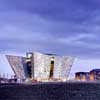
picture : Christopher Heaney
Titanic Belfast Museum
Location: Sea City Museum, Havelock Road, Southampton, Hampshire, SO14 7FY, UK
Southampton Buildings
Southampton Building Designs – Selection
Mary Rose Museum, Portsmouth, England
Wilkinson Eyre with Pringle Brandon (interior architect)
Mary Rose Museum
Glen Eyre Student Residences
Jestico + Whiles
University of Southampton Campus
Millennium Hotel, Ocean Village Estate
HKR Architects
Southampton Ocean Village : for Marina Developments Limited
Hampshire Buildings
Hampshire Buildings – Selection
Buildings by Wilkinson Eyre
Victoria Transport Interchange
Comments / photos for the Southampton SeaCity – English Titanic Museum Building page welcome
Website: www.seacitymuseum.co.uk

